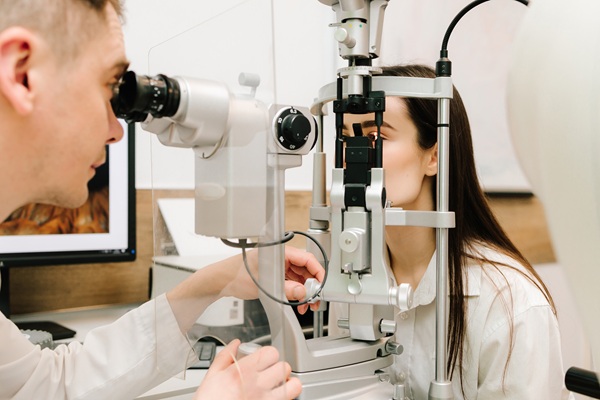How PROKERA Can Help With Damaged Eye Surfaces

Prokera® offers a way for patients with damaged eye surfaces to find relief from their symptoms and to address the underlying cause. This review details exactly what PROKERA® is and why optometrists often recommend treatment for patients dealing with damaged eye concerns.
PROKERA®: a detailed review and when an optometrist might recommend treatment
PROKERA is FDA-approved and safe for treating damaged eye surfaces caused by dry eye. Discussing PROKERA treatment with an optometrist is the best way to determine if treatment is appropriate. However, learning more about the basics can be helpful in determining if you may be an ideal candidate.
What is PROKERA®?
PROKERA is made from an amniotic membrane to treat a range of eye conditions that lead to damaged eye surfaces. The amniotic membrane is derived from placenta tissue, and it has special anti-scarring and anti-inflammatory properties that help eye surfaces heal after they are damaged.
What is PROKERA® used for?
PROKERA is primarily used to treat the effects of dry eye, which is most notably damage to the surface of the eyes. However, there are many different causes of dry eye that could lead to the need for PROKERA. This includes but is not limited to:
- Eye infections
- Age
- Computer use
- Medications
PROKERA can often also relieve eye pain, soreness, and fatigue. It can also improve the appearance of the eyes as well by treating red eyes. Other primary reasons that optometrists prescribe PROKERA is to reduce inflammation and the risk of eye scarring.
What are the benefits of PROKERA®?
As mentioned, PROKERA relieves common eye complications such as eye pain, soreness, fatigue, red eyes, burning eyes, itchy and watery eyes, and more. PROKERA is also a simple treatment solution and often an alternative to more invasive procedures. Treatment also has a relatively high rate of success and can produce lasting results with adequate aftercare.
Is PROKERA® safe?
PROKERA is FDA-approved and deemed safe for patients with damaged eye surfaces. There are no notable risks of PROKERA when used properly and monitored by an eye care professional. There may be some discomfort once the patient begins wearing PROKERA due to the size of the membranes. PROKERA is also not entirely transparent, so there may be some clouded vision during treatment.
How does PROKERA® work?
Patients can wear PROKERA like they would wear a contact lens. The membranes are to be worn for the entire course of treatment, which is typically between three and five days. The eye professional may recommend a second dose if the patient has not achieved the ideal results from the first treatment.
Schedule a visit to learn more about PROKERA® for damaged eye surfaces
We often recommend PROKERA to patients who have damaged eye surfaces caused by dry eye and other concerns. If you would like to discuss PROKERA with an optometrist, then we encourage you to reach out to us to set up a convenient time to come into our office for a consultation.
Get more information here: https://brighteyesny.com or call Bright Eyes Optometry at (914) 730-9574
Check out what others are saying about our services on Yelp: Prokera in New Rochelle, NY.
Recent Posts
Ophthalmologist and optometrists are two of the main eye care professionals. Both play an important part in helping you maintain the health and function of your eyes. However, while each type of eye doctor provides vision care, knowing the care you need can be confusing. Choosing the appropriate eye care provider depends on individual needs,…
Sunglasses have become a part of many people's wardrobes; however, they are also a great tool for protecting the eyes. Along with playing a large role in our daily lives, eyes are also sensitive to many things—sunlight being one of them. It is easy for one's eyes to sustain damage from direct sunlight exposure. Thankfully,…
A comprehensive eye exam does more than assess vision; it can also reveal early signs of various health conditions. Many systemic diseases affect the eyes before other symptoms appear, making regular exams essential to overall health care. Optometrists use advanced diagnostic techniques to detect conditions beyond vision problems, allowing for early intervention and treatment.Routine eye…
Cataracts are a common vision impairment that primarily affects older individuals, leading to clouded visions and, in some cases, blindness. Fortunately, cataract treatment provides effective solutions to restore sight and improve people's overall quality of life. Optometrists can use these advanced methods to improve precision, reduce recovery time, and lead to better treatment outcomes.Cataracts develop…


